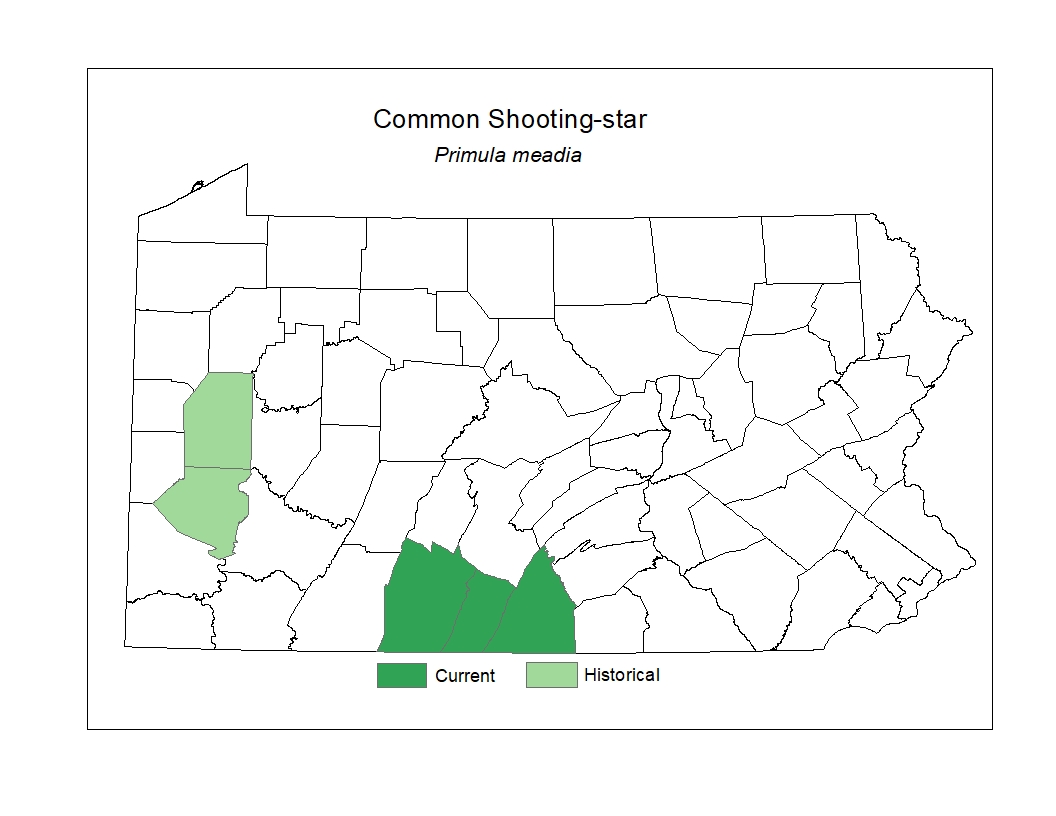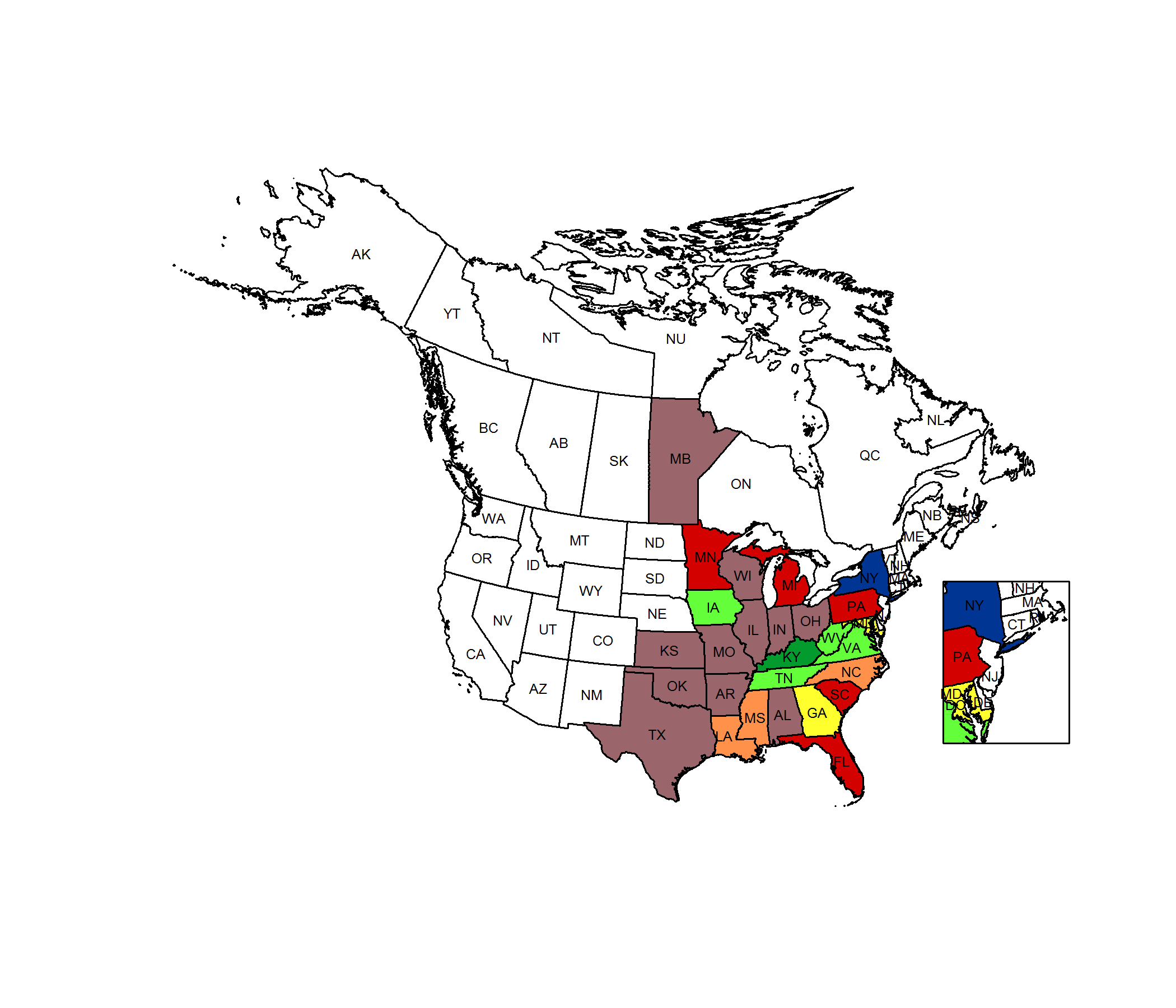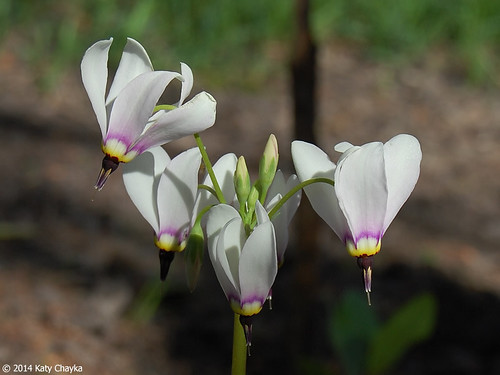 Species Factsheets
Species Factsheets
Primula meadia
Shooting Star
State Status: Pennsylvania Endangered (PE)
PBS Status: Pennsylvania Endangered (PE)
Federal Status:
Global Rank: G5
![]() rank interpretation
rank interpretation
State Rank: S1
Did You Know?
Queen bumblebees are the most commom vistior to this species; they obtain pollen via rapid vibration of the thoracic muscles.
Description
Shooting star (Primula meadia) is a showy perennial with thick, fleshy roots that grows no taller than roughly half a meter. Flowers are white, lavender, or lilac and point upwards and backwards. They are organized around the stamens, which form a beak-like cone in the center of the flower, resembling a shooting star. The flower stem is leafless, usually about 20-30cm tall, and topped with an umbel of three to fifteen nodding flowers. Shooting star is a spring flower evident in May and June. Leaves are large, oblong and arranged in a basal rosette. They are often marked with red at the base.
Rank Justification
Critically imperiled in the nation or state because of extreme rarity (often 5 or fewer occurrences) or because of some factor(s) such as very steep declines making it especially vulnerable to extirpation from the state.
Habitat
Shooting star is found in most of the midwestern and eastern states in a variety of habitats. Throughout its range, the plant occurs in moist and dry meadows, prairies, and woodlands, usually on basic or circumneutral soil. In Pennsylvania, it occurs in Fulton, Franklin, Bedford, and Snyder Counties, primarily on wooded slopes, which are often composed of a shale or limestone base.
Survey Dates
Flowers in late April – May
Distribution
In Pennsylvania, it occurs in Fulton, Franklin, Bedford, and Snyder Counties

Threats
Appropriate habitat for shooting star is uncommon throughout much of the state, even within the plant's natural range. These habitats are subject to human impact, as many are mowed, bulldozed, and herbicided for right-of-way maintenance. Furthermore, invasions of exotic plant species such as purple loosestrife (Lythrum salicaria), creates new pressures on native plants for the competition of resources.
Management
Management of the natural hydrological and disturbance regimes of appropriate habitat is recommended for the future success of shooting star. Management of areas to maintain a prairie habitat would benefit the plant. This includes woody debris removal, natural disturbance regimes, such as fires, and invasive plant control to reduce outside competition for resources.
Conservation Status Map

NatureServe. 2017. NatureServe Explorer: An online encyclopedia of life [web application]. Version 7.1. NatureServe, Arlington, Virginia. Available https://explorer.natureserve.org.
https://eol.org/pages/583438/details
- NatureServe. 2018. NatureServe Explorer: An online encyclopedia of life [web application]. Version 7.1. NatureServe, Arlington, Virginia. Available at https://www.natureserve.org/explorer
- Pennsylvania Natural Heritage Program. 2018.
- Rhoads, A.F. and W.M. Klein, Jr. 1993. The Vascular Flora of Pennsylvania. American Philosophical Society, Philadelphia, Pennsylvania. Rhoads, A.F. and T.A. Block.
- 2007. The Plants of Pennsylvania: An Illustrated Manual. 2nd edition. University of Pennsylvania Press, Philadelphia, Pennsylvania.







